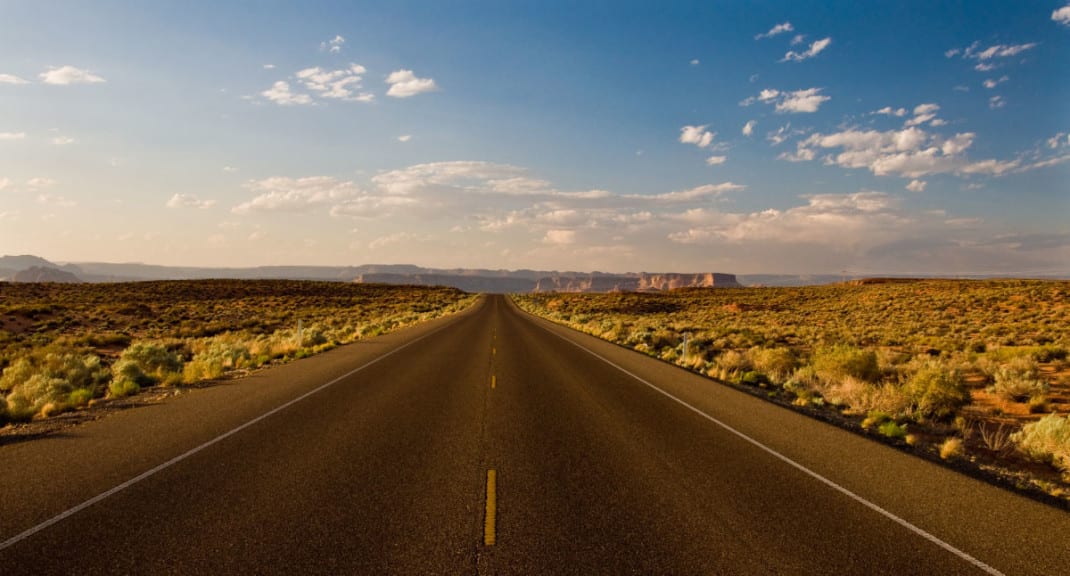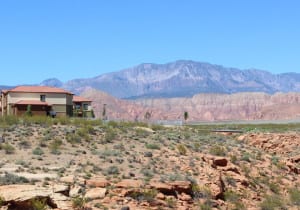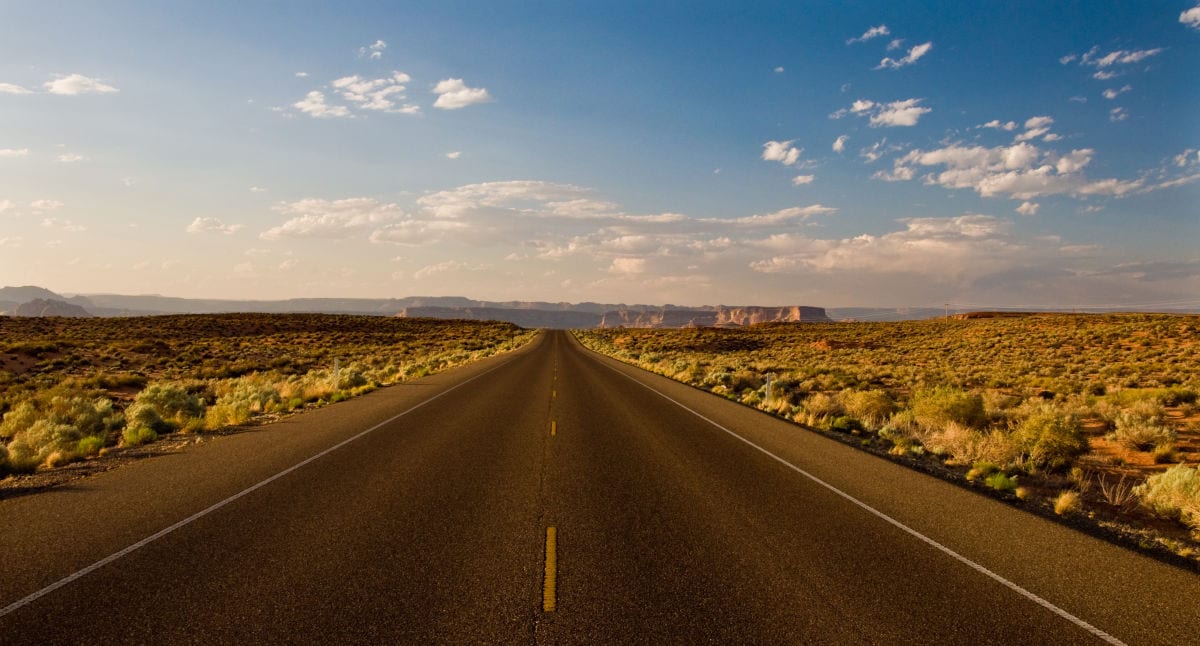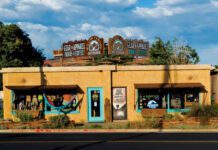
Last week, Lisa Rutherford and Paul Van Dam, who stand in opposition to the Northern Corridor, answered a series of questions about the proposed Washington Parkway and were given an opportunity to express their unfiltered beliefs about what the construction of this road would mean for the community and the Mojave Desert Tortoise and whether other alternatives would be better. This week, Myron Lee and Dean Cox, proponents of the Northern Corridor, have been given the opportunity to respond to the same questions.
Lee is the director of the Dixie Metropolitan Planning Organization, and Cox is the Washington County Administrator.
Is the proposed Northern Corridor the right plan?
“The proposed Northern Corridor does not need to incite a divisive battle and declare winners or losers because there are ways to both meet the transportation needs of Washington County and be sensitive to the natural environments of the National Conservation Area with a Northern Corridor.
“The need for the Northern Corridor is driven by the assumptions that people will continue to move to Washington County, develop land, and work within a 20-minute commute of their homes. By analyzing various data sets, the Northern Corridor was identified as a vital transportation link to meet local travel demands in the near future.
“According to the U.S. Census Bureau, Washington County’s population has grown from 13,669 in 1970 to 151,948 in 2014:
1980 – 26,065
1990 – 48,560
2000 – 90,354
2010 – 138,115
2014 – 151,948
“The Governor’s Office of Management and Budget indicates that Utah’s population will more than double by 2050, with Washington County projected to continue growing at a rate of 3.5 percent per year. Those people will move to areas where current land use plans allow [such as] into Ivins, Santa Clara, St. George, Washington, Hurricane, and smaller cities throughout the County.
“If population densities fill in according to current land-use plans, and if people continue to own 2.09 vehicles per household, the Northern Corridor will be needed to help relieve traffic congestion throughout the area by 2025 or 2030.
“After considering all of the recent road projects, future road projects and current and planned transit improvements, several streets would fail without the Northern Corridor because of over-demand, including Bluff Street, Diagonal Street, St. George Boulevard, 100 South, I-15, Red Hills Parkway, River Road, Red Cliffs Drive, and 10th East in St. George. Road failure occurs when the number of vehicles demanding to use a particular road exceeds that road’s capacity – causing gridlock.
“In planning future roads, elected officials and planners focus on creating a good transportation quality of life – where the amount of ozone emissions and carbon footprints are reduced by keeping vehicles moving and getting them off the road as quickly as possible (instead of leaving them idle in congested traffic).
 “Overall, transportation corridor options in St. George are limited by the area’s topography. Traffic is constricted at two bottlenecks north of the heart of St. George (one at Bluff and
“Overall, transportation corridor options in St. George are limited by the area’s topography. Traffic is constricted at two bottlenecks north of the heart of St. George (one at Bluff and
Sunset, the other at I-15 and River Road). These bottlenecks carry both the east-west traffic from Ivins to Hurricane and the north-south traffic from Bloomington to Leeds. To be effective, an alternative route is needed north of the Red Hills Parkway and south of Washington Boulevard (I-15 Exit 13).”
Will the Northern Corridor alleviate the traffic that the Dixie Municipal Planning Organization anticipates?
“According to the best computer modeling software available today, the Northern Corridor is anticipated to carry 32,000 vehicles a day and afford the needed relief to other routes to prevent gridlock and make congestion more manageable.
“To paint a picture of traffic demand in 2040 with the use of the Northern Corridor: Bluff Street is anticipated to carry 63,800 vehicles a day (7 lanes); St. George Boulevard would carry 27,000 (similar to today); Red hills Parkway would carry 38,000; Red Cliffs Drive would serve 30,400 vehicles per day; 100 South in St. George would carry 19,600 vehicles per day, and I-15 would carry over 105,000 vehicles per day. Without the Northern Corridor, all of these and other streets would fail to meet the traffic demands even with all the planned capacity improvements in place. To simply keep widening roads, such as St. George Blvd to increase capacity is not feasible due to the extreme impact it would have on the main thoroughfare in St. George.”
How will having this large gap in the National Conservation Area affect the Mohave Desert Tortoise?

“The State of Utah, St. George City, Washington City, and the Dixie [Municipal Planning Organization] commissioned a biological analysis in 2012 to study that very question. Planners of the Northern Corridor understand the need to preserve, protect, and enhance the NCA and the Mohave Desert Tortoise habitat and believe that this can happen through proper planning, design and mitigation. The 2012 study indicates several ways that a road project could accomplish those goals.
“The study is titled “Integration of East-West Transportation Needs with Conservation Objectives for Desert Tortoise in Washington County, Utah.” Chapter seven of the study outlines over 50 potential benefits to the NCA that could be implemented with a road project. Without a road project, those solutions would take decades or longer for other agencies to accomplish.”
Are there better options?
“Transportation planners, professional engineers, designers, consultants and others have worked for years to meet the travel demands of Washington County travelers without a Northern Corridor. Over the last several years many projects have come forward to help delay the need for the Northern Corridor. These projects vary from widening Bluff Street, I-15 and Red Hills Parkway to increasing the capacity of intersections on Bluff Street at Snow Canyon Parkway, Sunset Boulevard, and St. George Boulevard.
“But still, population increases forecast beyond 2030 (taken together with current land use plans, current trends, and housing choices), indicate a definite need for the Northern Corridor. The community is simply running out of other options to mitigate forthcoming traffic congestion.
“Of course these projections are based on a continuation of population growth and a continuation of current trends regarding car ownership, land development, property rights, travel mode trends, etc. And if those trends change, if people stop moving to Washington County, if land development is curtailed and different growth models emerge, then traffic demand projections would need to be re-evaluated and revised – possibly postponing the need for the Northern Corridor beyond 2030. But for now, local elected officials and area planners do not see that happening and must plan for the foreseeable future.”
As it has been stated numerous times throughout the publication of this series, the issue of the Northern Corridor is a nuanced, subtly complex issue, with intelligent, passionate people on both sides of the story eloquently arguing for what they believe is the right outcome. There will be a time in the future when this issue is decided, and the Northern Corridor will either be built or set aside. For the foreseeable future, however, it remains a subject that will continue to be debated in Washington County, Utah, and even Washington D.C.
Next week: A conclusion?
RELATED STORIES:
– The Ghost Highway: The battle for the Northern Corridor, part I (an introduction)
– The Ghost Highway: The battle for the Northern Corridor, part II (the builders)
– The Ghost Highway: The battle for the Northern Corridor, part III (the opposing arguments)






Nice work on this series of articles, Mr. Gilman!
One has to chuckle over the proponents’ claims that pushing 32,000 noisy, polluting, gas guzzlers per day through prime tortoise habitat in the NCA will reap tremendous benefits for the tortoise population. “Delusional” does not even begin to describe such silliness!
The Red Hills Parkway is already a good beginning for a “northern corridor.” Instead of spending 100 million dollars to destroy tortoise habitat, we should expand and improve the parkway as needed. Of course, providing an outstanding public transportation system might be a viable alternative to more freeways, and would be much less expensive in every way — cost and environment — than continuing to facilitate more and more automobile traffic. California has proven that traffic will always grow rapidly to exceed new road capacity.
Too, support by religious authorities for responsibly-sized families of two or three children in lieu of encouraging the sheep to breed like rabbits would be an important step to help moderate the growth in traffic, pollution, and the rate of resource depletion.
Waid Reynolds